

A group of Cairngorms Connect Partnership staff, from a range of roles and backgrounds, journeyed to Norway to explore habitats that we’re working towards here in Scotland.
South-west Norway has a similar climate, geology, and range of species to us here in Scotland, yet it looks very different. In many respects, the habitat of south-west Norway can be seen as the long-term “target” for the Cairngorms Connect area as it benefits from a wider and healthier range of habitats, flora, and fauna.
For this reason, the Cairngorms Connect Science and Monitoring team study comparison sites in Norway to help us understand the differences and build up a picture of what could be possible in this landscape, 200-years into the future.
Seeing and understanding these comparisons and landscapes is not just beneficial from a science perspective. It is really important for staff working across the Cairngorms Connect landscape to experience the range of habitats that we’re collectively working towards restoring. Spending time within these possible future landscapes empowers staff to feel optimistic and provides space to build connections and reinforce our shared vision.
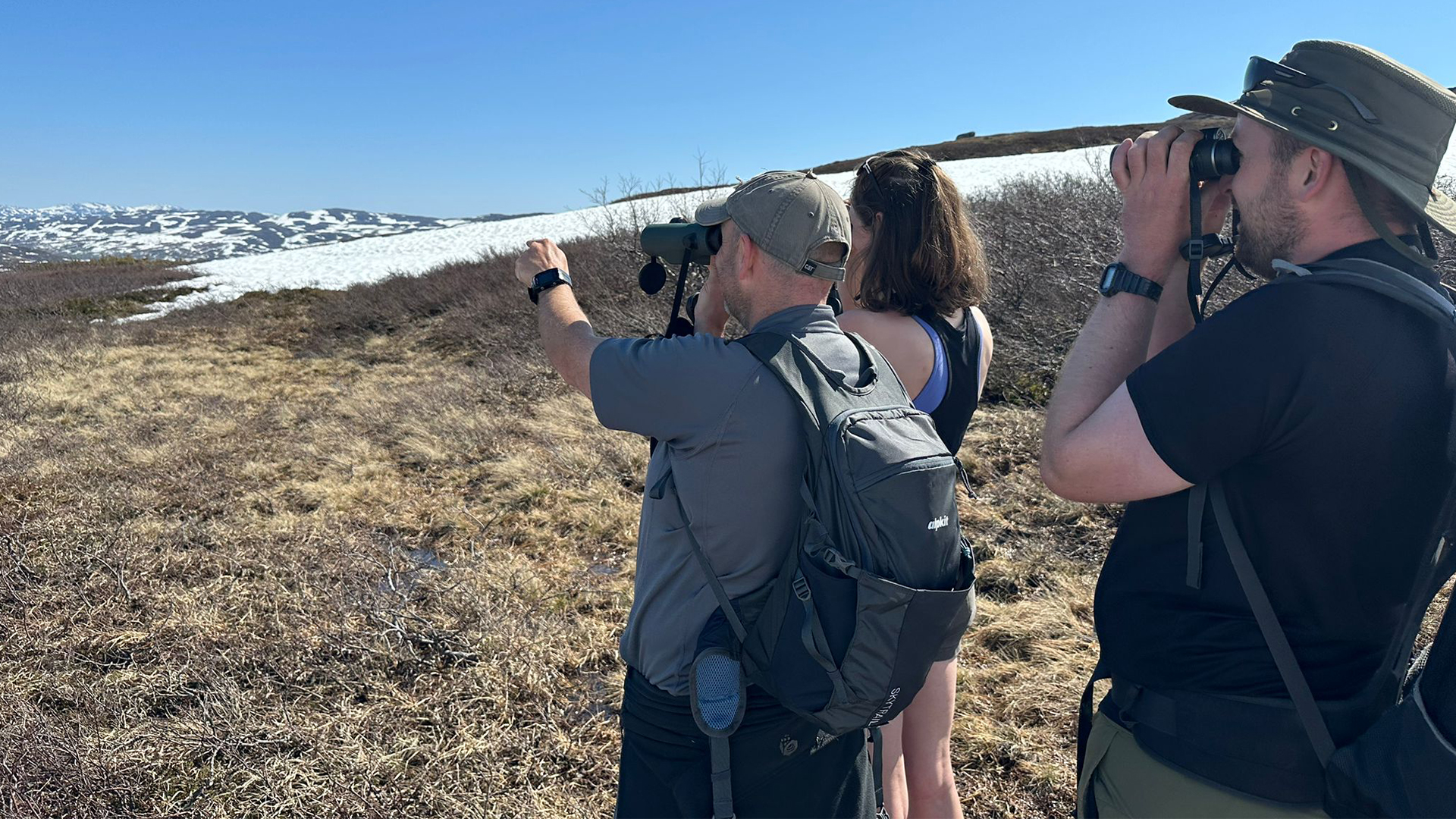 Partnership staff looking for Reindeer in the landscape © Pete Short
Partnership staff looking for Reindeer in the landscape © Pete Short
“A trip like this strengthens partnership working between organisations, which is the lifeblood of a successful landscape scale restoration project.” – Pete Short, Cairngorms National Park Authority Countryside Ranger
This June, thirteen people from the Partnership, representing Wildland Ltd, NatureScot, Forestry and Land Scotland, RSPB Scotland, and the Cairngorms National Park Authority travelled to Bjåen Turisthytta located in the montane birch belt, just below the willow region at ~900m above sea level.
The group explored the local area and learned about the different land management practices in Norway which has enabled these landscapes to regenerate.
“Showing what Scotland should have and could have in its future was both inspiring and brought forth a sense of hope.” – Mike Butler, RSPB Scotland Abernethy Assistant Warden
The group were most struck by the range of woodland habitats, the abundance of birdsong, how these landscapes are central to Norwegian culture, and that so much change was possible in a short space of time. The trip was hosted and facilitated by Duncan Halley from NINA (Norwegian Institute for Nature Research).
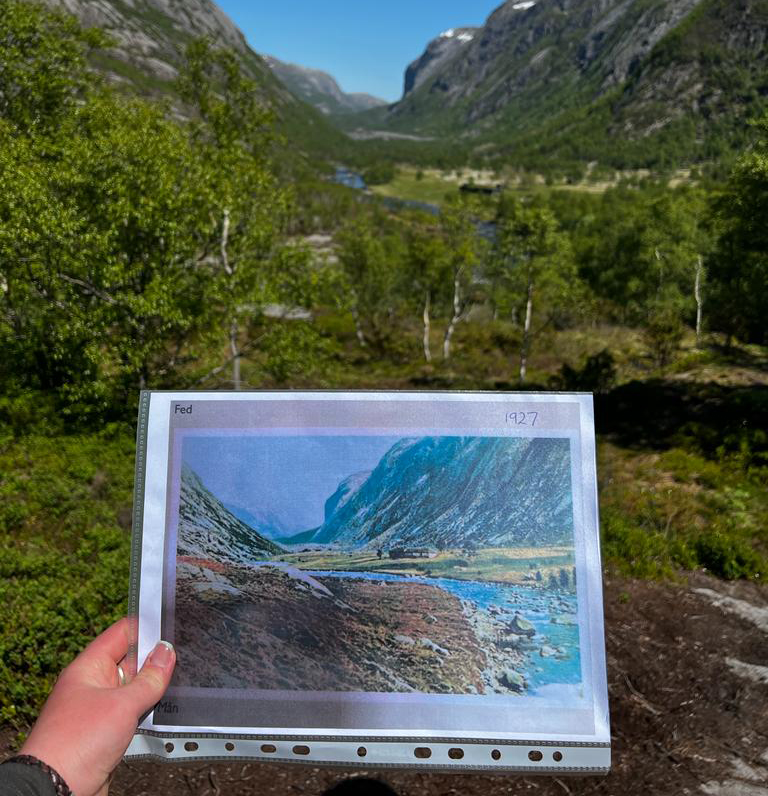
Comparing the landscape from 1927 to what it looks like today © Lana Richardson
“On our first day we visited Mån, a spectacular hanging valley with similar geology and climate to some glens in the Cairngorms. Duncan passed around a photo of the same view from 1927 and it was a stark difference. The photo could have been Scotland with its treeless, heather-covered slopes and barren hillsides. I hadn’t realised until that point that SW Norway isn’t just a climatic and geological analogue of the Highlands, but a historical land use analogue too, and to see that in just 50 years the landscape could recover so drastically was staggering.” – Josie Slade, Cairngorms National Park Authority Nature Engagement Officer
Paul Hibberd, Forestry and Land Scotland (FLS) Regional Visitor Services Manager, said “Seeing and hearing the richness and diversity of birdlife in the relatively young birch woods was inspiring.” Laura Nicoll, FLS Glenmore Visitor Centre Supervisor, continued “The hills around Bjåen were constantly alive with the joyful sound of birdsong due to the higher tree cover.”
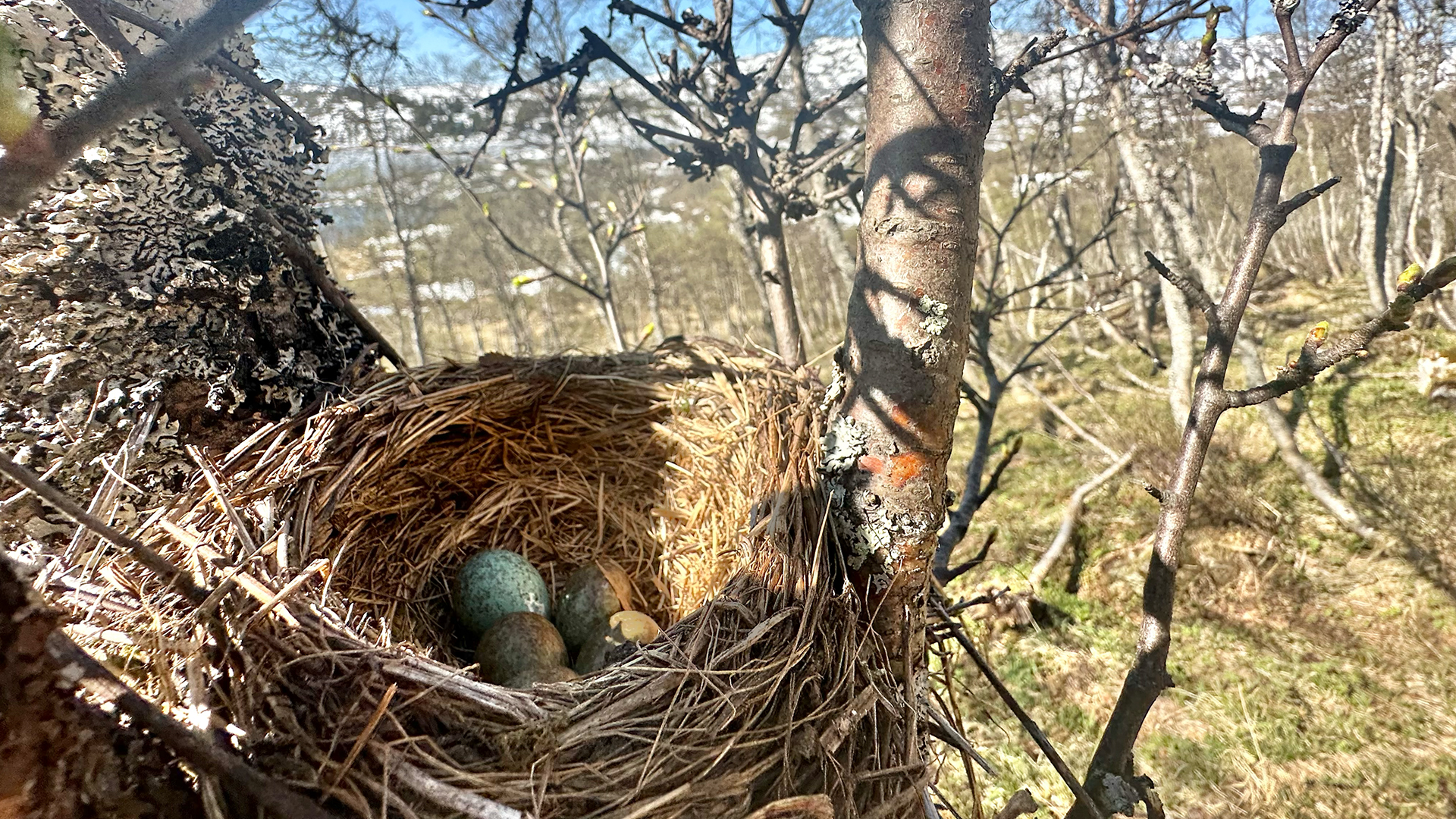
Fieldfare nest © Pete Short
“A highlight was being able to see all the different woodland zones, pines at lower altitude giving way to the birch and then the birch getting smaller as the altitude increases and eventually giving way to montane willows and dwarf birch. It demonstrated the potential for habitat restoration on the nature reserves I work on and the importance of deer management to allow this to occur.” – Harry Corbey, NatureScot Nature Reserve Officer
Seeing successful deer management as a part of this landscape also was a highlight for Wildland Ltd. Estates Management Assistant Lana Richardson. “One of the things I’ll take away is seeing that herbivores can exist positively within established woodland, will benefit the woodland ecosystem and in turn can provide a sustainable food resource.”
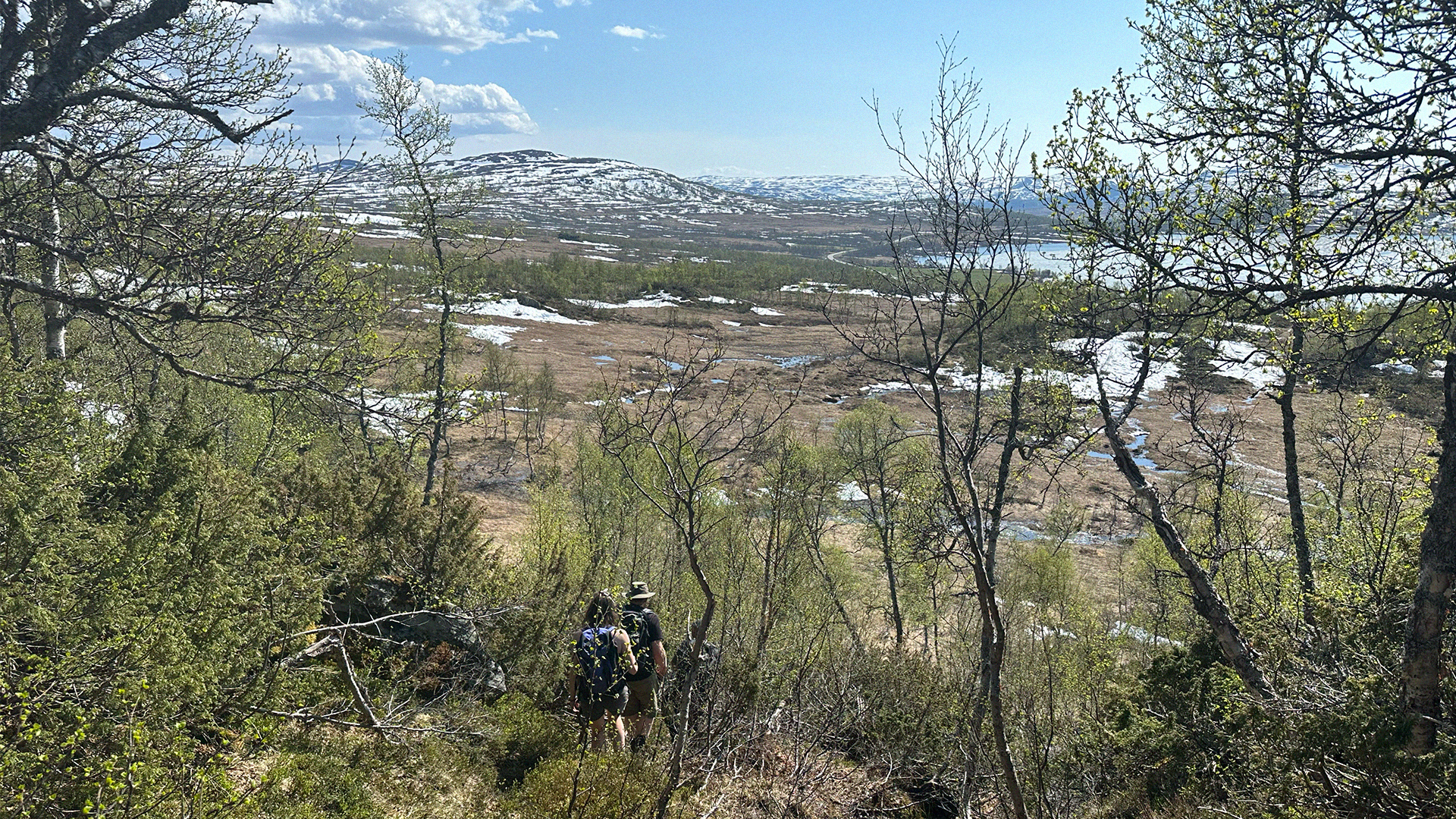
Descending through the Birch belt © Pete Short
Pete Short reflected on how this trip would affect his work as a Countryside Ranger for the Cairngorms National Park Authority. “My work as a ranger revolves around connecting people to nature - whether in conversation with people out on the trails, with an organised group from a school or with young people in the Cairngorms National Park Junior Ranger Project.
I was immediately struck at how nature connected people are in Norway – it’s inbuilt into the culture. ‘Friluftsliv’, translating to ‘free air life’ or more roughly, ‘open-air living’ is the Scandinavian concept of committing to spending time in the outdoors. Combining this with the right of access (allemannsretten) to land results in more people getting outside in nature. This has proven benefits to physical and mental health, and with a more time spent in nature comes a greater understanding of the land and how to look after it - for example, there is barely any litter on the side of the roads.
It is clear that many Norwegians grow up immersed in nature from a young age. Returning Scotland makes me want to create even more opportunities for young people to get outdoors.”
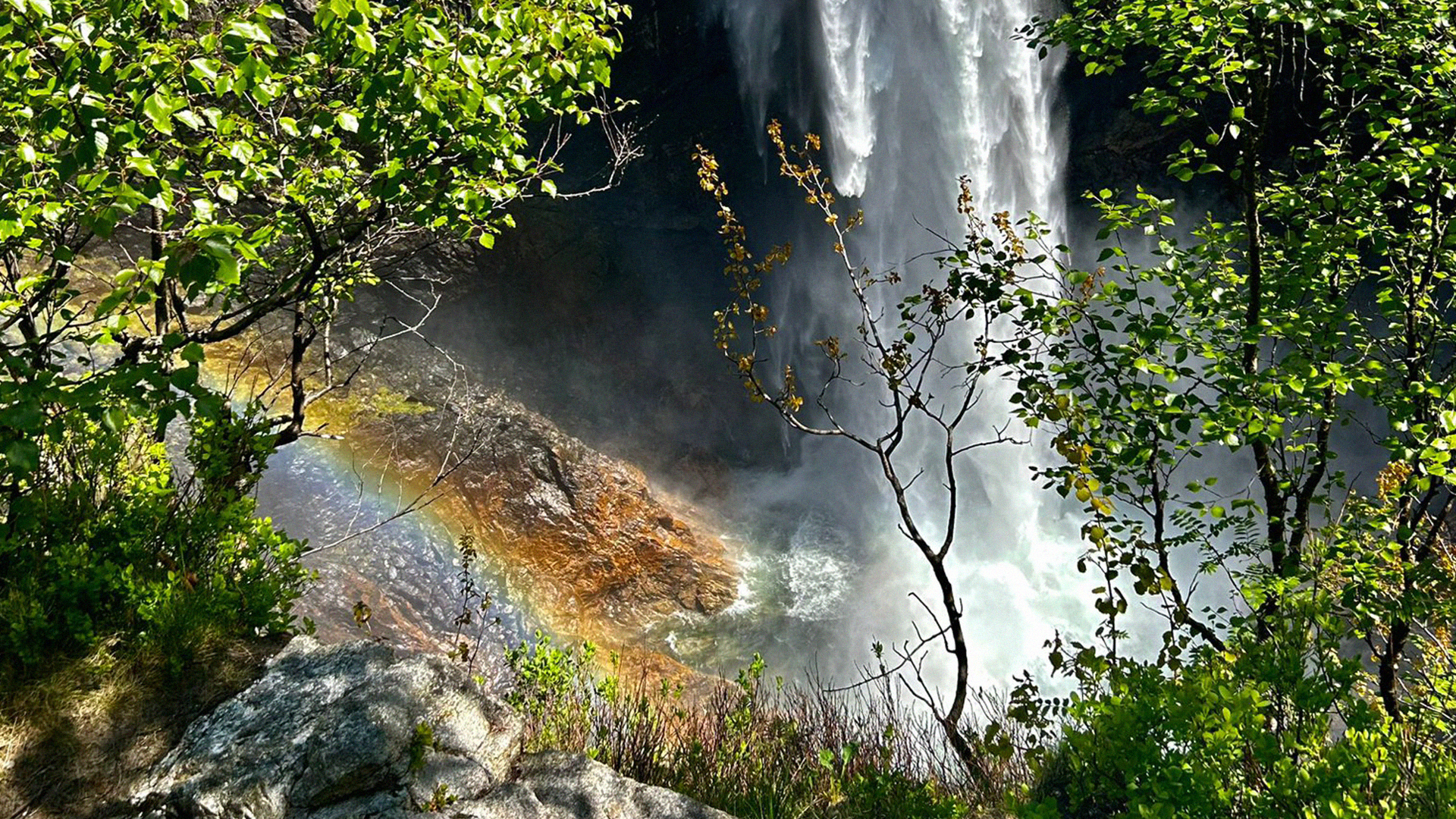
Flourishing landscape © Marc Willis
After seeing these landscapes in Norway, the group was asked to describe what Scotland’s landscapes in the future could look like.
“There would be no abrupt borders and no straight lines! If you were to scan a hillside from base to summit, you would see pines – young and ancient – merging seamlessly into the bright, airy birch belt, which would gradually give way to a mat of dwarf willow. Even at 900m, the natural treeline, the transition into the alpine zone, would be subtle and gradual. Roe and red deer would attain their natural size and thrive as woodland animals in their true habitat.
People from all walks of life would respect and value the hills, forests and wildlife of the Cairngorms, and would feel a greater sense of stewardship over the land, the universal rights and responsibilities of the Land Reform Act Scotland having become embedded in our society in a similar way to the Norwegian allemannsretten.” – Laura Nicoll, Forestry and Land Scotland Glenmore Visitor Centre Supervisor
This opportunity was made possible by the funding Cairngorms Connect receives from the Endangered Landscapes Programme.
Hill to Grill 2025 was a day of connection and community, music and talks, crafting and creativity - and, of course, delicious wild Cairngorms Connect Venison!
Rosie Beetschen and Megan Jones tell tales of bog monsters coming back to life in our regenerating peatland landscape